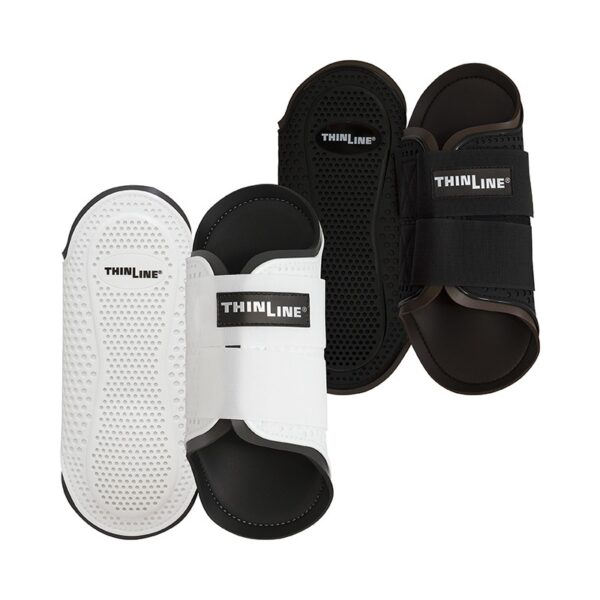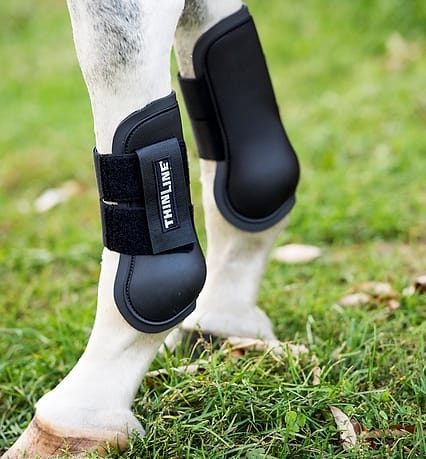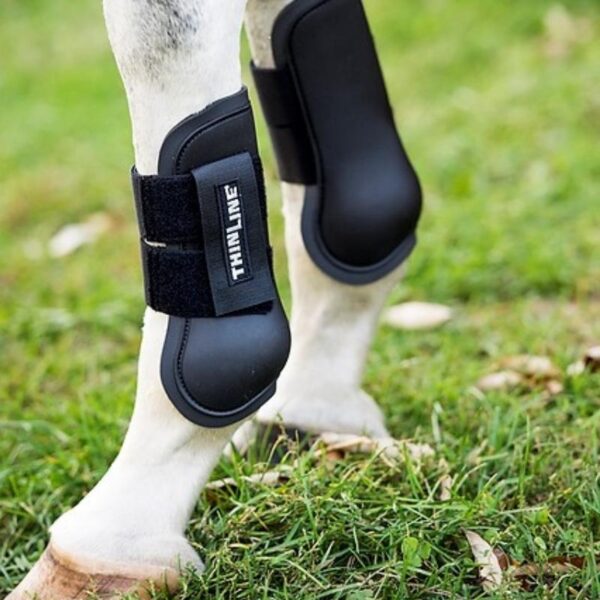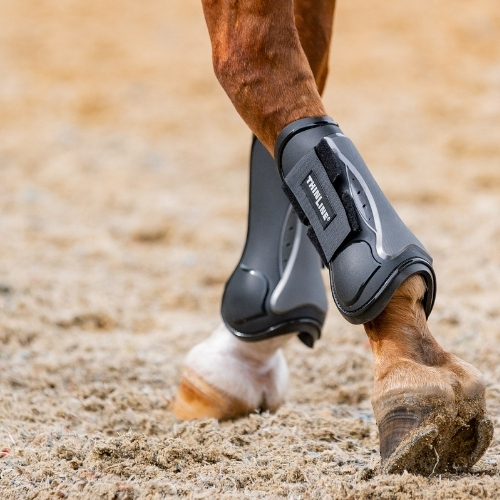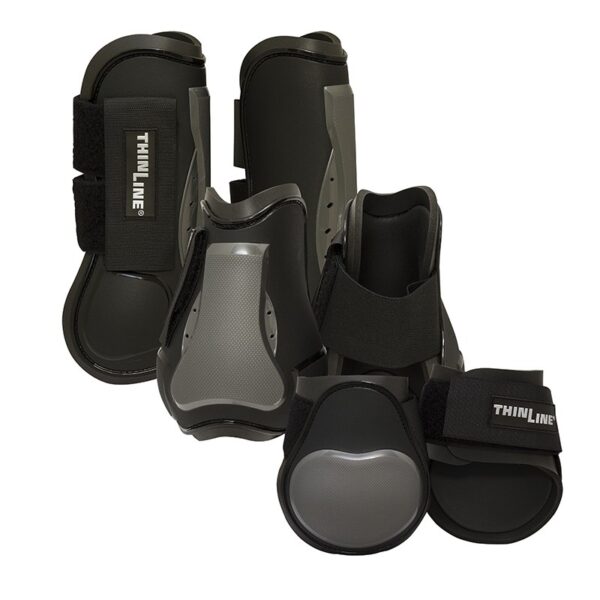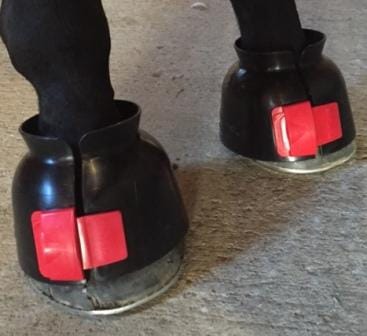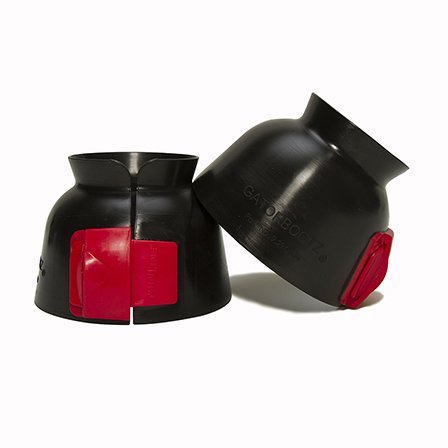Why use Horse Boots?
Horses have little muscle tissue for padding in the lower leg. Tender bones, such as the splint bone, as well as tendons and ligaments, have no natural protection. There are many reasons to protect your horses’ legs, there are many more reasons to choose ThinLine over gels, neoprene, leather or compression foam.
Some horses, no matter how light their workload, are prone to over-reaching, forging, or interfering and injuring themselves. It is generally when horses are fatigued they strike themselves. Young horses may hit themselves because they are unbalanced. And of course, performance horses benefit not only from impact protection but from the soft tissue support found in many horse boots.
The thicker padding on the inside of all boots protects the delicate splint bone along the inside of the cannon bone. This bone is very easily broken and can lead to several months of lameness as well as permanent cosmetic issues. Once a splint bone breaks it is often difficult to find a product that can accommodate the permanent swelling without causing the horse discomfort.
When putting on any type of boot the elastic strap must be pulled from the front (bone) and wrap towards the back.
It’s important that horse leg protection fits well and is kept clean. Purchase products that do not collect dirt and sweat. They are generally more expensive but they last longer.
Here are the most commonly used leg protection for horse boots.
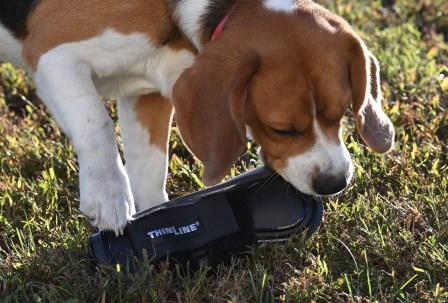
Closed Front Splint Boots:
They go all the way around the leg, and are usually worn on the front and hind legs and help prevent the horse from hitting itself during hard work.
This support boot for horses is preferred by event riders, endurance riders, and dressage riders. These boots are frequently lined with sheepskin or other shock absorbing materials. The outer shell should be breathable if not lined with ventilating fabric. One of the consequences of fully booting or wrapping legs is heat built up. When soft tissue is overheated damage to soft tissue occurs more frequently. If you choose the wrong product you are actually increasing the probability of leg damage. Again, the more expensive boots contain more protection and less heat retention A few more dollars to stay away from neoprene products or gel is generally advisable. Consider the cost of one veterinary visit.
Why is this protective horse boot lined with ThinLine?
Our trademark open cell technology delivers impact protection in a wafer-thin breathable foam, perfect for a horse splint boot. ThinLine doesn’t compress. Pressure points; created from tendons, bones, splints or wind puffs, are gently shaped into the ThinLine memory which rebounds once it is off the horse. Also, an anti-microbial agent is infused into ThinLine allowing use on multiple horses. Finally, ThinLine foam does not absorb water or collect dirt which means our protective boots for horses stay in place and are easy to maintain.
Pro Mesh Exterior Construction
Pro Mesh is used for the protective outer layer of our closed front splint horse boots. Pro Mesh material acts like ‘flexible horse armor’ offering the ultimate combination of breathability with impact and abrasion protection as well as support and durability.
Open Front Boots also called Schooling Boots:
Open front boots protect the inside, outside, and back of the leg (the tendon) and are used only on the front legs. There is intentionally no protection on the front of the leg (the cannon bone) so horses may feel when they hit a rail in jumping and are therefore encouraged not to do so again. This is the most popular boot for Hunters and Jumpers. This boot is generally made of hard plastic or leather and is lined with neoprene, gel or shock absorbing foams. Generally, an ankle boot or 3/4 hind ankle boot (slightly taller) is used in conjunction with open fronts.
Flexible Filly Air Shock Jumping Boots:
The exterior of this horse leg protection boot is designed with Air Cushion Technology and Flexible Concussion Protection with an Offset Strike Guard. The inside is ThinLine foam technology.
Bell Boots
Encircle the pastern and the bell shape covers the entire hoof. They can be made of rubber, heavy synthetic material or leather lined with fleece at the coronary band. Bell boots are worn in the stall or paddock, or while ridden. Primary functions of the bell boot are to protect the coronary band and to keep the horse from pulling off front shoes.
Leg Wraps
Before there were specialized horse boots, leg wraps were the predominant method of equine leg protection. Polo wraps and track bandages are the most common type used for riding and standing bandages are used in the stable. Most riders have moved away from polo wraps and track bandages because, if wrapped wrong, they can easily bow a tendon. They need to be laundered and rewound after each ride. Now that more effective boots are on the market polo wraps have taken a back seat to horse boots.
Shin Boots
Shin boots are most commonly used by jumpers to prevent injury to the front of the leg when hitting a jump rail.
Ankle, Fetlock Boots
Fetlock boots are for protection when a horse hits itself by traveling too close behind. they cover the pastern joint and fetlock areas of the lower hind legs. They are not meant to provide support. They are usually made of leather or synthetic materials and lined with sheepskin or other soft material. They are the smallest of all boots and do not cover the tendons and ligaments so there is little to no danger of overheating the soft tissue.
Knee Boots
Equine knees are hard to protect. Riders find knee boots very hard to keep in place but sometimes knee protection is needed. These boots aren’t really supportive, but provide extra padding to horses if they may bump their knees together in spin or make contact with a barrel.
Skid Boots
Skid boots protect the back and lower portion of hind fetlocks and pasterns. A good skid boot will provide support along with protection from contact with the riding surface during fast stops and turns. They will be made of leather and fleece or synthetic material that provides cushioning. Skid boots typically wear out quickly so again consider how much you want to pay vs how often you want to replace them. And always remember if your boots are damaged just realize how much you have done to protect your horse.
Sports Medicine Boots
The Sports Medicine Boot was originally designed by Professionals Choice. It was a radical design and really changed the equine boot market. Now there are hundreds of manufacturers who incorporate the design to provided the horse with a boot which truly supports soft tissue. The drawbacks: there are problems of overheating, dirt and bacteria growth associated with neoprene lined products.
Because the boot Velcro’s onto itself the outer surface must be made of neoprene.
Neoprene is commonly used as a material for scuba diving suits, fly fishing waders, etc. as it provides excellent insulation against cold. Neoprene is less expensive than breathable fabrics. The more spongy foamed neoprene is designed for insulation. This has very little impact (shock absorbency) and is a culprit of heat retention. Neoprene breaks down rapidly so it’s life span is shorter than breathable impact protecting foams. The cheaper neoprene foams also collect dirt and are difficult to clean. Bacteria are alive and well in many sport medicine boots so we recommend you find a boot which is lined on the inside, against the horse leg, with something other than neoprene. It will improve durability as well.


